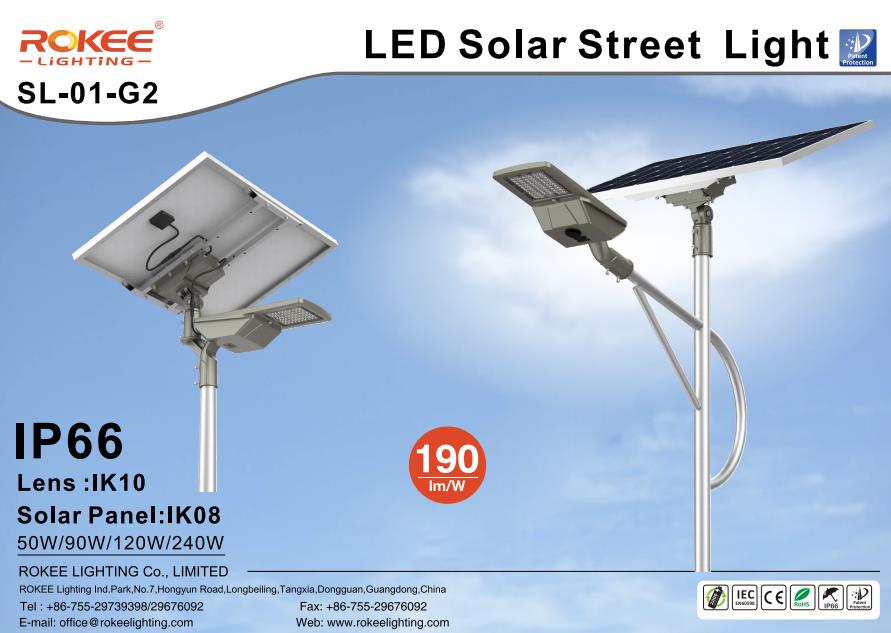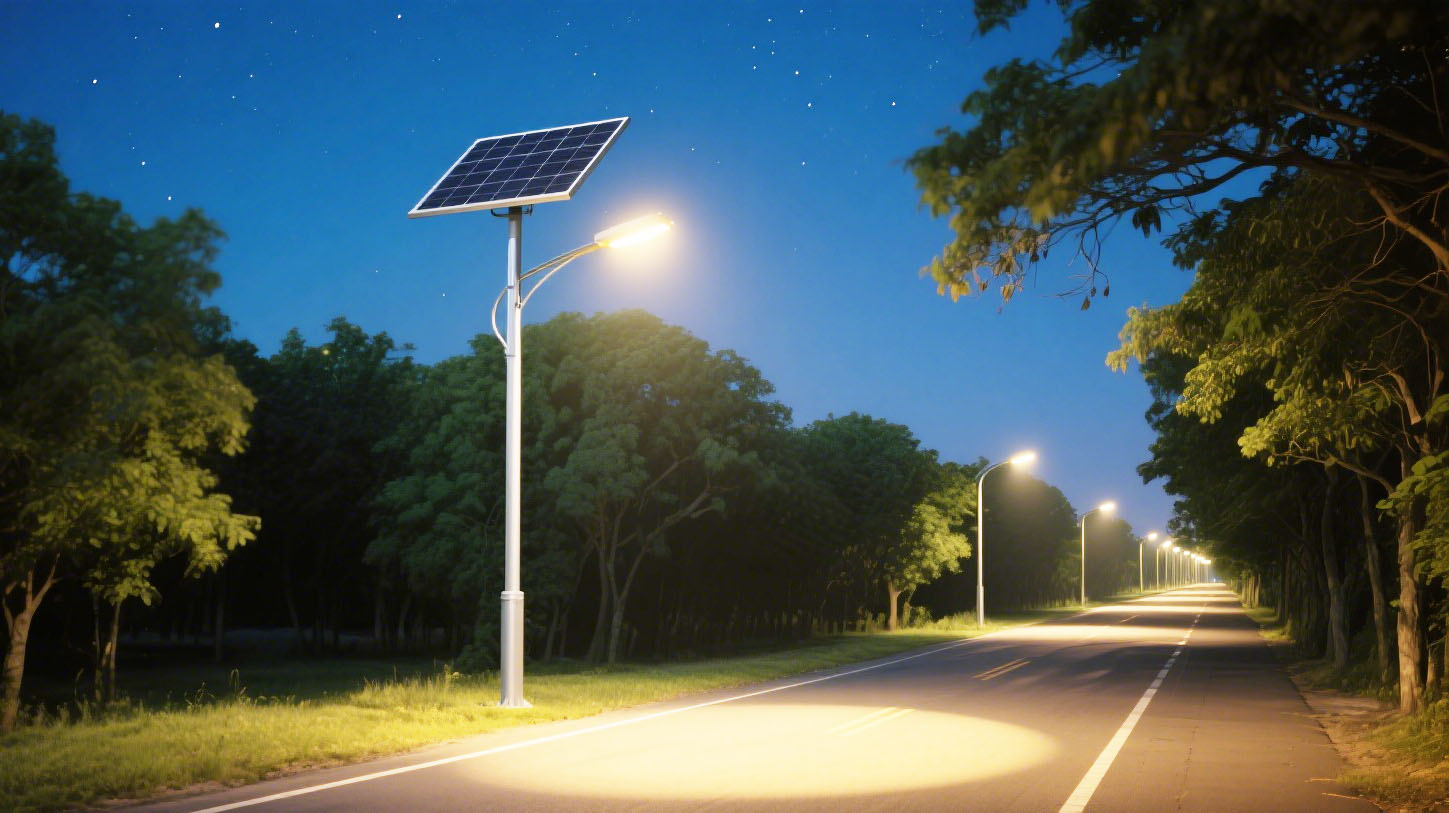
Should Solar Lighting Focus More On Wattage Or Lumens?
As municipal authorities, developers and commercial property managers seek sustainable and cost-effective lighting solutions, solar lighting has emerged as the clear winner – not only due to its significant energy-saving potential, but also its reduced environmental impact. However, selecting the appropriate solar lighting system is no simple task, particularly when balancing energy efficiency against lighting performance. One of the most critical factors to consider when evaluating solar lighting efficiency is understanding the relationship between wattage and lumens.
In this article, we will explain the key differences between wattage and lumens, how they impact solar lighting efficiency, and how to select the optimal lighting solution for your requirements. Whether illuminating urban streets, commercial properties, or public spaces, grasping these factors will empower you to make informed decisions that maximise both energy savings and lighting performance.
What does the wattage of a lamp represent?
Wattage: Measuring Energy Consumption
Wattage denotes the amount of energy consumed by a light source to emit light. In traditional incandescent bulbs, higher wattage equates to brighter light. For instance, a 100-watt bulb emits more light than a 60-watt bulb. However, within the context of solar lighting and with advancements in LED technology, wattage no longer correlates directly with brightness. Instead, wattage now primarily indicates the energy consumption of the fixture, irrespective of the amount of light it emits.
For solar lighting systems, rated power is crucial as it directly influences the electricity generation required from solar panels. Lower-wattage fixtures consume less power, making them more efficient as they place fewer demands on solar panels and batteries. However, power alone does not determine a light's brightness, which is where lumens become particularly important.
What are lumens for solar lights?
Lumens: Measuring Light Output
Whilst watts measure energy consumption, lumens measure brightness – the total amount of visible light emitted by a light fixture. In other words, lumens indicate the actual light output of a bulb or fixture. For instance, an 800-lumen bulb emits roughly the same amount of light as a traditional 60-watt incandescent bulb. Higher lumens equate to brighter light output.
For solar lighting, focusing on lumens rather than wattage is key to ensuring adequate brightness without overburdening the energy system. Efficient solar lighting systems are designed to produce high lumens at low wattage, utilising advanced LED technology to deliver bright illumination while minimising energy consumption.
How do wattage and lumens impact solar lighting efficiency?
Balancing Energy Consumption and Brightness
When evaluating solar lighting efficiency, understanding how wattage and lumens interact is crucial. An ideal solar lighting system employs low-wattage fixtures to minimise energy consumption while maximising lumens to ensure adequate brightness. This balance is essential for creating a durable, high-performance solar lighting system that provides reliable illumination without depleting battery power.
For instance, a high-wattage solar luminaire with low lumen output is inefficient, consuming substantial energy without delivering sufficient illumination. Conversely, a low-wattage fixture with high lumen output proves more efficient, providing bright light while conserving energy.
Energy Efficiency in Solar Lighting:
The ideal scenario is generating more lumens per watt, signifying higher efficiency. This is termed luminous efficacy, typically measured in lumens per watt (Lm/W).
Low Wattage: Reduces energy consumption, thereby extending battery life and minimising the number of solar panels required to power the system.
High Lumens: Ensures optimal lighting performance, delivering bright and effective illumination in outdoor spaces.
Comparing Wattages for Solar Lighting
Finding the Right Balance for Your Project
When comparing solar lighting options, understanding wattage and lumen ratings is crucial.
The following guidelines will assist you in selecting the appropriate combination based on your requirements:
For Pavements and Pedestrian Areas: Low-wattage fixtures (typically 5-10 watts) with a lumen output of 300-600 provide sufficient, safe, and comfortable illumination for pavements and areas with low foot traffic. These fixtures are energy-efficient while delivering adequate brightness to ensure pedestrian safety.
Car parks and parks: For spaces like car parks and parks, you require fixtures with higher wattage and lumen ratings. Solar lights rated at 15-30 watts and 1000-3000 lumens can provide sufficient illumination to cover larger areas while ensuring safety and visibility.
Streets and Roads: Street lighting demands greater brightness, with power ranges from 30 to 60 watts and lumen outputs between 3000 and 6000 lumens. This ensures drivers and pedestrians receive ample illumination, enhancing road safety without compromising energy efficiency.
The key lies in finding the appropriate balance for each specific area. Lighting specialists can assist in evaluating project requirements based on the area's size, purpose, and energy demands.
Optimising Solar Lighting for Municipal and Commercial Projects
Design Considerations for Maximum Efficiency
When planning solar lighting systems for cities, parks, or commercial properties, several factors can help optimise wattage and lumens for energy-efficient performance:
Solar Panel Size: The wattage of the luminaire determines the required solar panel size. Lower-wattage luminaires necessitate smaller solar panels, thereby reducing overall system costs.
Battery Capacity: Opting for low-wattage, high-lumen luminaires also reduces battery capacity requirements, simplifying battery sizing for extended lifespan and enhanced reliability. This is particularly crucial in regions with limited sunlight, where energy conservation is vital to ensure reliable night-time operation.
Smart Lighting Controls: To further optimise energy usage, consider integrating smart lighting controls such as motion sensors, dimming capabilities, and timers. These controls enable power reduction during periods of lower demand (e.g., reduced footfall) while maintaining adequate illumination when required.
Positioning and Light Distribution: Strategically locating solar lights to maximise light output is key to minimising the number of fixtures needed. This also contributes to lower overall energy consumption and ensures efficient illumination distribution across the entire area.

The Impact of LED Technology on Wattage and Lumens
Advancements in Solar Lighting Efficiency
LED technology has revolutionised the relationship between power consumption and lumens output within solar lighting systems. Compared to traditional lighting technologies such as incandescent or fluorescent bulbs, LED lamps achieve high lumen outputs while requiring significantly lower power. This enables solar lighting systems equipped with LEDs to deliver brighter illumination with reduced energy consumption.
For municipal authorities and commercial property managers, investing in LED-based solar lighting systems translates to long-term energy savings, reduced maintenance costs, and a diminished environmental footprint. By utilising LEDs, you can maximise light output and energy efficiency, thereby securing a more cost-effective solar lighting solution.
Conclusion: Achieving Efficiency Through Appropriate Wattage and Lumens
Selecting the right combination of wattage and lumens is crucial for optimising the performance and efficiency of solar lighting systems. By understanding how these two factors work in tandem, municipal authorities, developers, and commercial property managers can ensure their lighting investments deliver bright, reliable illumination while minimising energy consumption.
To explore a solar lighting solution that suits your specific needs, please contact rokee@rokeelighting.net immediately and let our experts help you design the most efficient and cost-effective solar lighting system for your project.